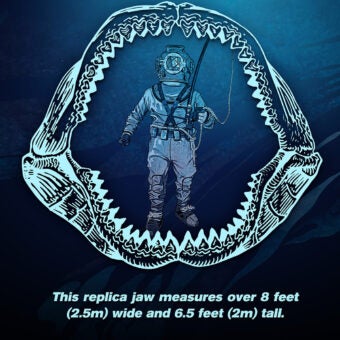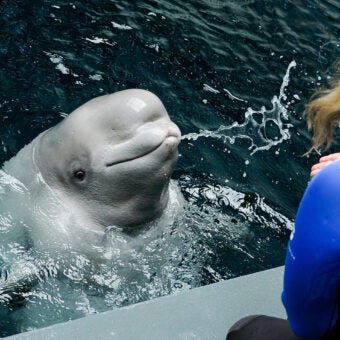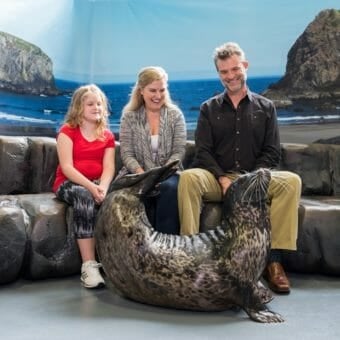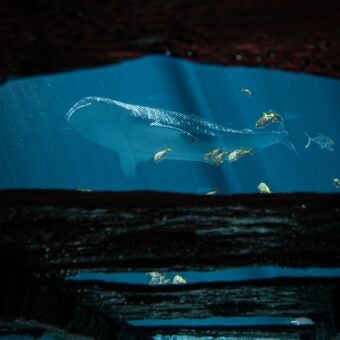-
Size
8 inches (20 cm) -
Diet
Nudibranchs, benthic invertebrates -
Range
Indo-Pacific -
Habitat
Shallow reef flats of lagoons and seaward reefs
Physical Characteristics
- Readily identifiable by its distinctive coloration.
- The body and fins are bright yellow shading to brown on the upper back. There are thin, brownish diagonal bars on their sides. The caudal peduncle is marked with a black spot.
- Draws its name from the black bar on the head that passes through the eye with an equally broad white bar behind. These two bars together give the appearance of a raccoon’s mask.
- Grows to about 8 inches (20 cm) in length.
Animal Fact
The life span of the raccoon butterfly fish is believed to be up to 9 years.
Diet / Feeding
- Diet consists of nudibranchs, tubeworm tentacles and other benthic invertebrates. Also consumes algae and coral polyps.
Range / Habitat
- Occurs in the Indo-Pacific from East Africa to Hawaii, southern Japan, and the Lord Howe and Rapa Islands. Also in the Southeast Atlantic on parts of the coast of South Africa. Absent from the Red Sea and the Persian Gulf. Individuals have been encountered in the Galapagos Islands.
- Adults are found in shallow reef flats of lagoons and seaward reefs as deep as 100 feet (30.5 m). Juveniles prefer to remain among rocks of the inner reef flats and tide pools.
- Has apparently been introduced on reefs in several areas of the southeast coast of Florida.
Reproduction & Growth
- Oviparous (egg-laying species).
- Forms pairs during breeding.
Conservation Status
- “Least Concern” on the IUCN Red List.
Additional Information
- Primarily nocturnal and occurs in pairs or small groups.
- Life span is believed to be up to 9 years.
- Useful as an aquarium species as it preys on Aiptasia and Majano, small nuisance anemones.
Sources
- A Guide to Angelfishes & Butterflyfishes. Allen, G.; Steene, R. and Allen, M., pgs. 142
- http://fl.biology.usgs.gov/documents/Chaetodon_lunula.pdf
- http://eol.org/pages/204383
- www.fishbase.org





